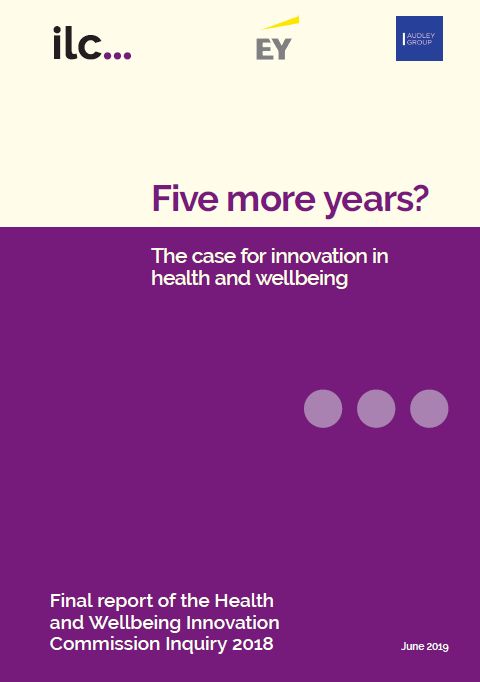Health and Wellbeing Innovation Commission Inquiry: Five more years?
Jun 20, 2019 | REPORTS
The Government has set itself a grand challenge: to increase the healthy life expectancy in the UK by five years by 2035. Yet at the same time, our healthcare system is under significant strain, with rising costs and no sign of demand abating.
If we are to achieve the Government’s aim while maintaining fiscal stability, we will need to improve the overall productivity of our healthcare system. But current trends are pointing in the wrong direction: a radical shift is needed, towards preventing ill health and promoting wellbeing.
Doing more of the same won’t get us where we need to go. As acknowledged in the Government’s recently launched prevention strategy, new approaches are needed. The nature of those approaches remains up for grabs. Commentators are increasingly clear that the NHS must ‘innovate or die’ – but what does this mean in practice? What kind of innovation do we need? And are we set up to capitalise on the innovations already coming through?
As society ages, the cost of healthcare is set to increase – but the UK’s ageing population is not the sole driver of rising health expenditure. In fact, far from saving the NHS money as one might expect, advances in medical technology are also a significant cost driver.
Previous ILC work has shown that innovation has the potential to help address fiscal sustainability and meet challenges faced by the health sector, such as the increase in the numbers of people living with multiple long-term health conditions.However, to realise this potential we need to create a space for innovation that extends far
beyond the hospital gates.
Softer innovations, outside the healthcare system, have just as much to contribute to healthy lives as health apps and digital medical innovations, but are often overlooked. And there are many other challenges facing innovators outside the medical arena. These include how to gather evidence of impact, particularly where this is complex and affects a wide range of outcomes. This complexity can also affect funding – particularly where costs and savings accrue across organisational boundaries.
The Commission’s work demonstrated the urgent need to encourage innovation in the many non-medical fields that can
contribute positively to our health. We will need to stretch our understanding of the type of innovation required, far beyond the NHS’s organisational boundaries. If we don’t manage this, we risk letting poor planning distort our entire welfare state into a healthcare service.
Today’s challenge is to tap into developments in housing, transport, and areas such as social and emotional health, encouraging entrepreneurs and innovators in these fields and creating the infrastructure to recognise, incubate and replicate their innovations.
Authors: Dan Holden, Kate Jopling

